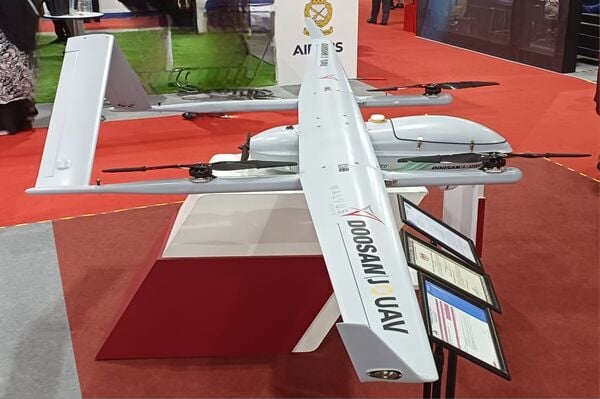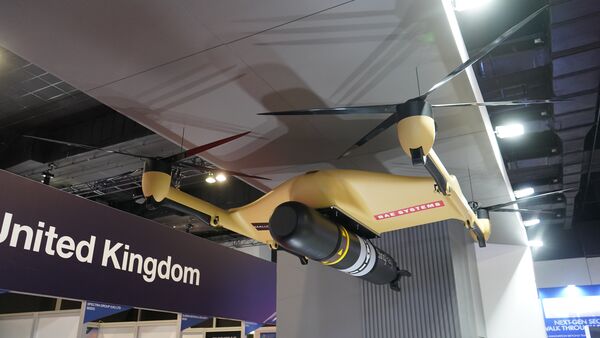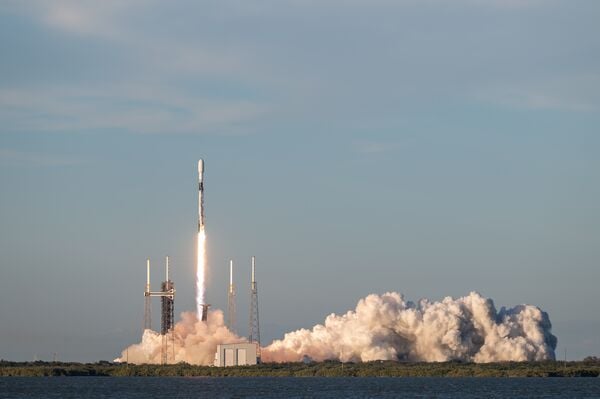- About
- Intara
- Capabilities
- Advisory
- Resources
- News
- Store
DSEI 2023: UK ISTARI constellation to begin launching from 2026
15 September 2023
by Olivia Savage


The ISTARI constellation will be fully operational by 2031, underpinned by several concept demonstrators such as Oberon – a cluster of three synthetic aperture radar-based satellites. (Airbus)
The UK's ISTARI constellation will begin launching from 2026, Lieutenant Colonel James Cheeseman, capability development lead at UK Space Command, told Janes at DSEI 2023, held from 12 to 15 September in London.
The launch of the satellites will be staggered, with an expected full operational capability (FOC) achieved by 2031 that will deliver “UK-generated space data”, Lt Col Cheeseman said.
ISTARI is a GBP968 million (USD1,205.28 million) investment to develop a multisatellite system that supports global surveillance and intelligence for military operations. Project Minerva will underpin this future constellation through the development of various operational concept demonstrators – Titania, Tyche, Oberon, and Juno – that respectively seek to investigate the military utility and capabilities of advanced communications, space-based data, optical, and synthetic aperture radar (SAR) information.
However, the “operational bracket of 2026–31 [for ISTARI] is slipping” because the Tyche and Oberon demonstrators are running behind schedule by at least a year, Lt Col Cheeseman noted.
DSA 2024: Malvus Sense unveils hydrogen-electric-powered VTOL UAS
08 May 2024
by Vinod Kumar CV


The Malvus Sense and JOUAV VTOL UAS, CW-25H, on display at DSA 2024. (Janes/Vinod Kumar CV)
Malaysian firm Malvus Sense unveiled the CW-25H, a new hydrogen-electric-powered vertical take-off and landing (VTOL) unmanned aircraft system (UAS), in collaboration with Chinese UAS firm JOUAV at the Defence Services Asia (DSA) 2024 exhibition held in Kuala Lumpur from 6 to 9 May.
Powered by hydrogen-electric hybrid technology, the CW-25H has a flight time of up to 330 minutes.
The two companies are collaborating on UASs for the Malaysian Armed Forces. JOUAV designs and develops drones, while Malvus Sense assembles them in Malaysia.
The CW-25H has a maximum service ceiling of 6,000 m and a cruising speed of 80 km/h. It is adaptable for various applications from infrastructure inspection to environmental monitoring.
Syed Omar Syed Mohamad, managing director of Malvus Sense, said, “The CW-25H represents a paradigm shift in aerial operations. Its hydrogen-electric hybrid technology not only extends endurance but also ensures environmental sustainability. We are proud to offer a solution that not only meets but exceeds industry standards, setting a new benchmark for efficiency, safety, and performance.”
For more information, please seeMalaysia .
DSA 2024: BAE Systems showcases autonomous capabilities
07 May 2024
by Kapil Kajal


The T-650 – pictured above from the DSA 2024 exhibition – is an electrically powered heavy-lift UAS capable of lifting 300 kg out to a range of 30 km (or a radius of 15 km) at 140 km/h. (Janes/Kapil Kajal)
BAE Systems showcased its Herne extra-large autonomous underwater vehicle (XLAUV) and T-650 all-electric heavy-lift unmanned aircraft system (UAS) at the Defence Services Asia (DSA) 2024 exhibition held in Kuala Lumpur from 6 to 9 May.
This is the first time Herne and T-650 systems are being showcased in Asia.
Mike Blake, business development manager for autonomy and boats at BAE Systems, told Janes at the show that the Herne XLAUV will be demonstrated for the first time at a facility on the south coast of England in October 2024.
According to BAE Systems specifications, Herne features a modular and adaptable design that enables the platform to be configured for a wide range of operations, including anti-submarine warfare (ASW), intelligence, surveillance, and reconnaissance (ISR), seabed warfare, and protection of critical national infrastructure.
The T-650 has a payload capacity of 300 kg out to a range of 30 km at 140 km/h.
SDA developing FOO Fighter counter-hypersonic programme
07 May 2024
by Carlo Munoz


A SpaceX Falcon 9 rocket launches from Space Launch Complex 40 at Cape Canaveral Space Force Station, Florida, on 14 February 2024. (US Space Force)
The Pentagon's Space Development Agency (SDA) has awarded a USD414 million deal to build a series of new satellites, presumably capable of early warning and precision tracking of hypersonic missile systems.
Agency officials selected California-based Millennium Space Systems to construct the eight fire-control satellites as part of the SDA's Fire-control On Orbit-support-to-the-war Fighter (FOO Fighter) programme, according to an agency statement. The space vehicles (SVs) and associated payloads for the FOO Fighter satellites “will demonstrate advanced missile defence capability by incorporating fire control-quality sensors into a prototype constellation”, SDA officials said in the statement.
The eight satellites, which SDA anticipates to be launched into orbit by the first quarter of fiscal year (FY) 2027, “will accelerate fire-control capability” for the agency's Proliferated Warfighter Space Architecture (PWSA) programme. Specifically, agency officials are looking to develop and mature the SDA's counter-hypersonic capability in Tranche 2 Tracking Layer (T2TL) of the PWSA.
The UK's ISTARI constellation will begin launching from 2026, Lieutenant Colonel James Cheeseman, ca...
Latest Podcasts
Using OSINT to support law enforcement
Ritu Gill, Intelligence Analyst, joins Harry and Sean to discuss the practical use of OSINT to support law enforcement. Ritu discusses it’s use in supporting risk assessments and classified or closed sources of intelligence. She also discusses t...
Listen nowJanes Case Studies
Using Janes Intara to build a common intelligence picture: Russian build up on the Ukrainian border
View Case StudyNews Categories
 Air Details
Air Details